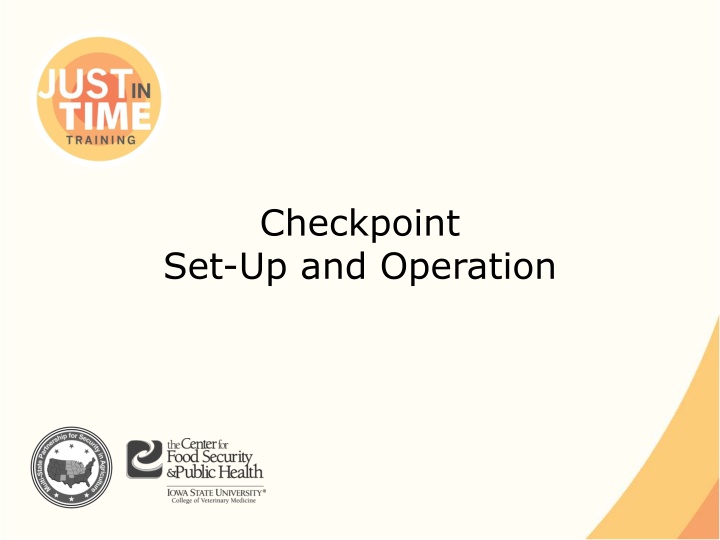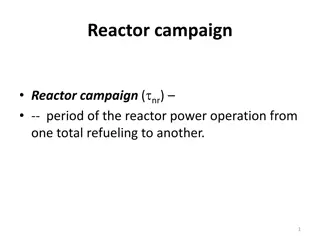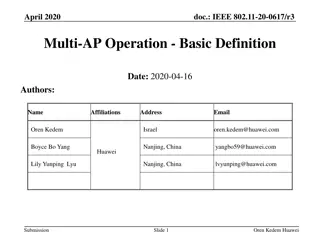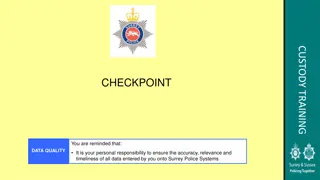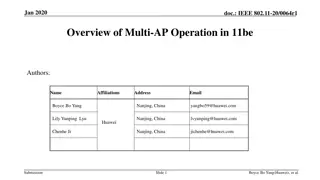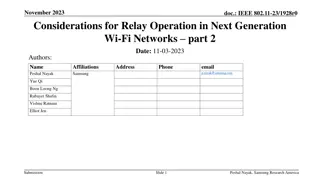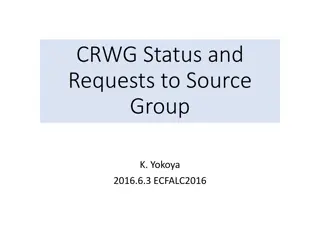Effective Checkpoint Set-Up and Operation Guidelines
Learn about setting up and operating checkpoints to ensure the health and safety of animals and prevent the spread of diseases. The content covers identifying vehicles with infected or susceptible animals, location selection, necessary equipment and supplies, personnel requirements, basic operation steps, and more. Adequate training and preparedness are essential for efficient checkpoint management.
Download Presentation

Please find below an Image/Link to download the presentation.
The content on the website is provided AS IS for your information and personal use only. It may not be sold, licensed, or shared on other websites without obtaining consent from the author.If you encounter any issues during the download, it is possible that the publisher has removed the file from their server.
You are allowed to download the files provided on this website for personal or commercial use, subject to the condition that they are used lawfully. All files are the property of their respective owners.
The content on the website is provided AS IS for your information and personal use only. It may not be sold, licensed, or shared on other websites without obtaining consent from the author.
E N D
Presentation Transcript
Checkpoint Set-Up and Operation
Vehicle Checkpoints Identify vehicles with infected or susceptible animals Restrict entry into disease areas Redirect vehicles Restrict vehicles with exposed or infected animals Checkpoint Set-Up and Operation Just In Time Training
CHECKPOINT SET-UP Location Equipment and Supplies Personnel Checkpoint Set-Up and Operation Just In Time Training
Location Public road or property Well-traveled, easy-access Flat, straight section Large enough area Allow vehicle movement and spacing Vehicle holding area Cleaning and disinfection area Away from animal production sites All-weather Access to water, sewer, and electricity Checkpoint Set-Up and Operation Just In Time Training
Equipment/Supplies Road supplies Traffic cones and barricades Signage Inform drivers Reflective vests Lighting Maps Animal supplies Pens or shelter Handling equipment Shade or fans, or water spray General supplies Tables, chairs Shelter Communication devices Water Checkpoint Set-Up and Operation Just In Time Training
Checkpoint Personnel At bare minimum 2 people Animal health Veterinarians/technicians, extension specialists Provide animal and movement knowledge Law enforcement Police departments, military, conservation officers Containing and moving vehicles, enforcing laws Cleaning and disinfection Trained in cleaning procedures Fire departments and HazMat Teams Support Road crews, public works Set up, screening procedures, animal assistance Checkpoint Set-Up and Operation Just In Time Training
CHECKPOINT OPERATION Basic Steps Checkpoint Set-Up and Operation Just In Time Training
Checkpoint Operation Identify vehicles Flaggers and screeners Allowed to proceed Returned to point of origin Moved to temporary holding area Cleaning and disinfection Animals off-loaded State veterinarian will specify Vehicles, commodities, animals for screening Checkpoint Set-Up and Operation Just In Time Training
OPERATION CONSIDERATIONS Documentation Communication Cleaning and Disinfection Animal Welfare Waste Management Personnel Training Checkpoint Set-Up and Operation Just In Time Training
Documentation Date/time at checkpoint Checkpoint location Vehicle and driver information Owners name Vehicle contents Point of origin Destination Health papers and shipping documents Action taken Allowed to proceed Returned to point of origin Diverted to temporary holding area Checkpoint Set-Up and Operation Just In Time Training
Communication Checkpoint to Incident Command Two-way radios Cell phones Computers Industry stakeholders Media General public Checkpoint Set-Up and Operation Just In Time Training
Cleaning and Disinfection Disinfectants Determined by disease Equipment Brushes Buckets Berming material Personnel Disinfect between vehicles Checkpoint Set-Up and Operation Just In Time Training
Personal Protective Equipment Goggles or face shield Disposable or washable coveralls Gloves Over boots Extra sets available Checkpoint Set-Up and Operation Just In Time Training
Animal Welfare Weather is critical factor Truck movement cools animals Stopping reduces this effect Can negatively affect animal health Keep traffic moving as quickly as possible Portable fans and misters may aid to keep animals cool Checkpoint Set-Up and Operation Just In Time Training
Waste Management All waste is considered contaminated Feces, urine, bedding material Personal protective equipment Remove waste immediately and put in solid container for disposal Do not dispose of any waste where it will harm environment Provide sharps container for contaminated needles Checkpoint Set-Up and Operation Just In Time Training
Training Incident Command System (ICS) Quarantine terminology State import regulations State response plan Basic biosecurity Safety issues Screening criteria Checkpoint Set-Up and Operation Just In Time Training
Lessons Learned from Previous Checkpoint Exercises Industries were grateful for protection Producers were more confident in herd s protection Species industries will shut down themselves Well informed public Checkpoint Set-Up and Operation Just In Time Training
Memorandums of Understanding For multi-jurisdictional collaboration Authorities Who will be in charge Responsibilities Individual state and collaborative tasks Support Checkpoint specifics and logistics Communication Disease dependent criteria Financial accountability Limitations and termination of agreement Checkpoint Set-Up and Operation Just In Time Training
Resources Graham JL, Hutton J, Cao S, Fagel M, Wright W. 2008. National Cooperative Highway Research Program (NCHRP) Report 525, Volume 13: A guide to traffic control or rural roads in an agricultural emergency. http://www.nap.edu/catalog.php?record_id=14184 Emergency Agriculture Movement Control Checkpoint Selection Guidance. Multi-State Partnership for Security in Agriculture. http://www.nasda.org/File.aspx?id=4076 Traffic Control Agricultural Response Monograph No. 001. Nebraska Department of Agriculture http://www.nda.nebraska.gov/homeland_security/monograph_001.pdf Checkpoint Set-Up and Operation Just In Time Training
Acknowledgments Development of this presentation was by the Center for Food Security and Public Health at Iowa State University through funding from the Multi-State Partnership for Security in Agriculture Authors: Abbey Smith; Glenda Dvorak, DVM, MPH, DACVPM
